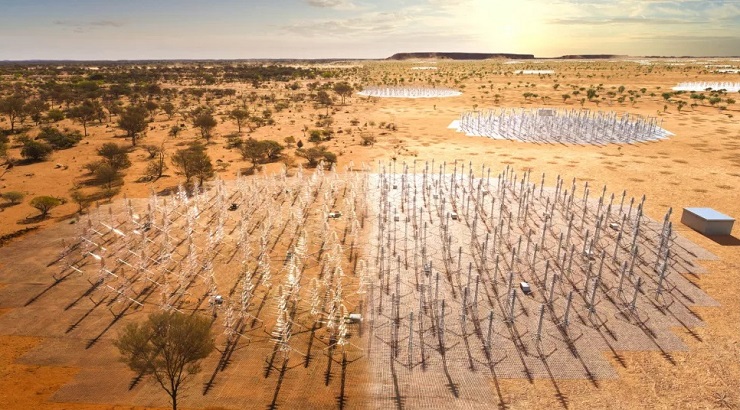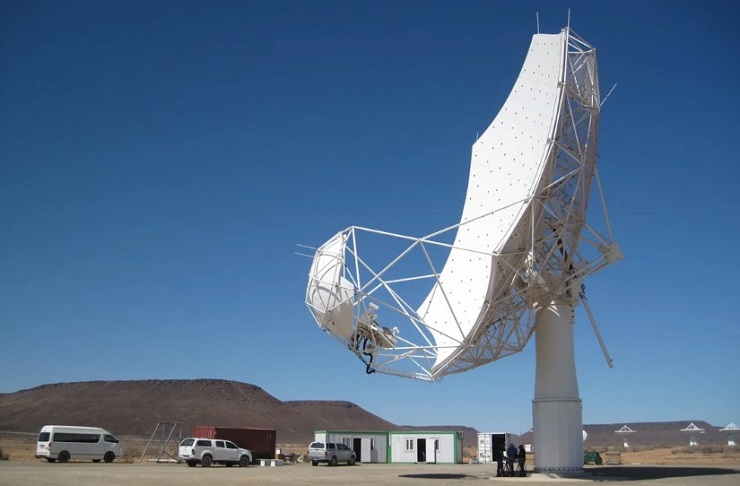Infrastructure
Work Finally Begins on the World’s Largest Telescope
Work Begins on World’s Largest Telescope After 30 years of Planning

Scientists who are building the world’s largest telescope – to be known as the Square Kilometre Array (SKA) – have finally begun work on site after 30 years of planning and 18 months of pre-construction work.
This follows the holding of groundbreaking ceremonies at two sites in Africa and Australia that will host equipment for what is set to become the largest radio telescope in the world upon completion of the project in 2028.
The two sites are the Karoo desert in South Africa’s Northern Cape and the remote Murchison shire in Western Australia north of Perth – which will host the SKA-Mid telescope and the SKA-Low telescope, respectively.
Due to the extreme sensitivity of the antennas, the telescopes need to be situated in remote sites where the use of conventional radio receivers is forbidden to avoid signal disturbance.
131,000 antennas
About 131,000 antennas will comprise the SKA-Low telescope, while 197 dishes, each 15 meters in diameter, will make up the SKA-Mid telescope in South Africa.
The facility in the Karoo desert will scan the sky for sources of radio waves in the middle-frequency range from 350 MHz to 15.4 GHz using the dishes.
On the other hand, the SKA-Low telescope in Australia will depend on 131,072 dipole antennas to detect radio waves of frequencies between 50 to 350 MHz.

“This [groundbreaking] marks a wonderful milestone for the SKA Observatory and the world’s science community,” SKA-Low site construction director, Ant Schinckel, said in the statement.
“We are about to begin building the world’s largest radio telescopes, and here in Australia, we are doing it with the support and close cooperation of some of the oldest astronomers in the world, the Wajarri people.”
30-year journey
Catherine Cesarsky, the chair of the SKA Observatory council, who graced the groundbreaking ceremony in Karoo said the project has been long in the making.
“Today, we gather here to mark another important chapter in this 30-year journey that we’ve been on together. A journey to deliver the world’s largest scientific instrument. After 18 months of intense activities around the world, we are starting construction of the SKA telescopes,” she said.
“The SKA telescopes will truly revolutionize our understanding of the universe. They will allow us to study its evolution and some of its most mysterious phenomena in unprecedented detail,” Cesarsky added.
RELATED: Construction of world’s first space hotel to begin in 2025
SKAO awarded over 40 contracts worth more than $157 million over the past 18 months, with an additional $315 million worth of deals announced during the ceremonies on December 5, 2022.
$1.55 billion
The project will cost $1.55 billion and will be funded by SKAO’s 16 member states, including Australia, South Africa, the UK, China, Italy, Portugal, and Switzerland.
As the name suggests, SKA will have a total collecting range of one square kilometre and astronomers hope they will be able to start using some of the antennas as soon as their construction is accomplished.
The first four SKA-Mid dishes and six SKA-Low stations will be able to work together as a single telescope, according to a statement by the SKAO.
The statement further said the first two antennas are due for completion by May this year, while the first dish is due for installation in April next year followed by completion of three to four additional dishes each month.
Building the world’s largest telescope will require laying down a massive infrastructure of power and fiber to link and support the antennas that will be set in spirals with a diameter of nearly 3,000 kilometres.
The SKAO council, which approved the construction in June 2021 has selected several key companies to complete this part of the installation.
The telescope is expected to operate for at least 50 years.














